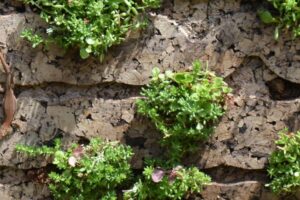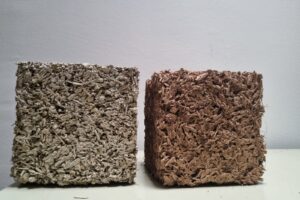
TELEBREATH: Smart textiles to improve monitoring of respiratory and associated diseases in vulnerable groups
April 30, 2024
AI to detect soil water response
May 8, 202403/05/2025
The Technological Development Center for Remote Acquisition and Data Processing Systems (SARTI) at the Universitat Politècnica de Catalunya - BarcelonaTech (UPC) participated in GIRASOL II, a project to develop a digital twin for photovoltaic plants by applying internet of things (IoT) technology, artificial intelligence techniques and immersive human-machine interfaces.
This advanced technology enhances understanding of the operation and individual performance of each component of the plant (panels and inverters), to infer the behaviour of the physical model (the plant), anticipate faults or degradation, or estimate the energy generated, based on solar radiation forecasts, while respecting the privacy and integrity of the individuals involved. Thus, the project focused on optimising the operation and operability of photovoltaic plants and facilitating integration into the electrical system.
GIRASOL II researched, developed and validated new concepts and improvements that were devised in the previous project, GIRASOL. It applied these to an operational photovoltaic solar plant, and integrated the production prediction functionality of STORM. In this second phase, an operational plant (self-consumption facilities in Barcelona or Llimoners) was used, to which continued access will be maintained for testing and training the AI model.
GIRASOL II worked in three contexts:
- Renewable energies: GIRASOL II represents a further step in the energy transition, as it has equipped photovoltaic solar power plants with an advanced diagnostic and prediction tool. These tools will be crucial to provide the services required by distribution networks in terms of regulation capacity, supply guarantee and quality, considering their unpredictable and intermittent nature.
- Industry 4.0: The project brought together some of the technologies widely used in this environment, such as big data, simulation, artificial intelligence and IoT. It incorporated two additional technologies: the metaverse (virtual reality/augmented reality) and data security.
- STORM Device: GIRASOL II integrated the STORM prediction system developed earlier by the company Àliter. The STORM system uses sky cameras and an artificial intelligence engine to predict solar radiation with high resolution, to facilitate better management and integration of photovoltaic plants into the electrical system.
Consortium, budget and funding
The project is led by SOLARTYS. In addition to SARTI at the UPC, it involves the Efficient Energy Cluster of Catalonia, Àliter, NVISION and REMO Experience. The project (file number: AEI-010500-2023-188) is co-funded by the Ministry of Industry, Trade, and Tourism (MINCOTUR) through the Innovative Business Associations (AEI) call for proposals for 2023, under the Next Generation assistance framework and the Recovery, Transformation and Resilience Plan.
The budget allocated to GIRASOL II is €304,766.00 and it was developed between May 2023 and April 2024.

Sector
You want to know more?
Related Projects
- A research team from the inLab FIB at the Universitat Politècnica de Catalunya - BarcelonaTech (UPC), together with the Asociación de Personas con Movilidad Reducida (AsoPMR), has taken part in the Spot4Dis project to enhance the mobility and autonomy of people with reduced mobility.
- The La Volta project foresees the construction of a large Catalan vault pergola within the Llars Mundet campus, in the Montbau neighbourhood (Horta-Guinardó district). This structure will become a new architectural landmark for Barcelona, combining traditional construction techniques with contemporary innovation. The project involves the Rehabilitation and Architectural Restoration Research Group (REARQ), at the Universitat Politècnica de Catalunya - BarcelonaTech (UPC), and is led by the Architects’ Association of Catalonia (COAC) and the Barcelona Provincial Council.
SATE-VEG: A system for energy renovation of buildings that helps reduce the urban heat island effect
Researchers from the Architecture, Energy and Environment (AiEM) group at the Universitat Politècnica de Catalunya - BarcelonaTech (UPC) have developed SATE-VEG, an external thermal insulation system with a vegetal coating that offers seasonally adaptive thermal behaviour, enhances urban biodiversity and promotes positive health effects. The system is made from organic materials, requires low maintenance and consumes minimal water.- A research team from the Interdisciplinary Group on Building Science and Technology (GICITED) at the Universitat Politècnica de Catalunya – BarcelonaTech (UPC) is leading the BioSAFE project, which aims to develop sustainable building envelopes —mainly façades— designed according to sustainability, comfort and safety criteria, with particular attention to their acoustic behaviour and fire performance.




